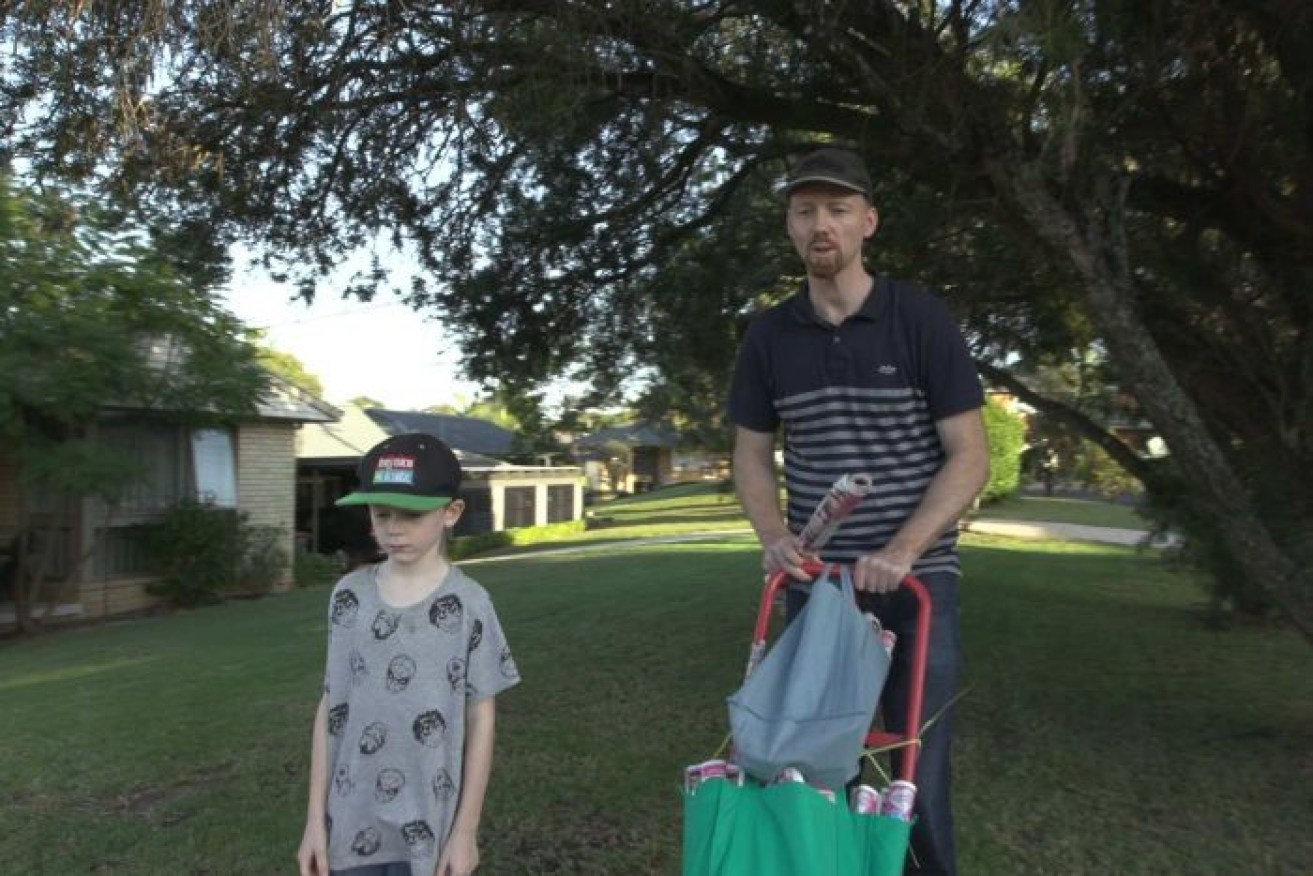The quiet desperation of workers caught up in Australia’s underemployment crisis

PHOTO: Julian Evans and his sons deliver newspapers to make some extra cash. (ABC News) Photo: ABC
Julian Evans is juggling several casual jobs but desperately needs more work.
His main job is at a hospital, where he works 15 hours a week as a theatre orderly.
The taekwondo black belt also runs some martial arts classes for five to six hours a week, and for extra cash he does a newspaper round on the weekend.
He also occasionally volunteers for an advocacy group for jobless people.
“Working at the hospital gives me a reasonable number of hours,” he said.
“But because it’s casual, and it’s based on need, I don’t always have a shift that’s as long as I might like.”
With about 26 hours of work each week, Mr Evans is not unemployed – but he is one of more than one million Australians who are underemployed.
He cannot get the hours he needs to get by.
With three kids, two nephews, the rent and the bills it means money is quite tight.
To get a bit more cash, Mr Evans said he collected empty refundable bottles.
“I have $7.30 from cashing in bottles yesterday,” he said.

Julian Evans says he’s ready for more work. Photo: ABC
Over the Easter and Anzac Day week, Mr Evans said he watched as his bank balance shrank to zero.
“Just to maintain basic living – I’m just not getting there at the moment,” he said.
“Not quite poverty line but I’m nudging it, definitely.”
Demand for part-time jobs growing

A chart showing underemployment by age. (Source: ABS, Labour force, Oct 2018, cat. no. 6202.0)
Heading into the federal election, Australia’s unemployment rate is 5 per cent, around the lowest it has been in five years.
But to be counted in the official employment figures, a worker only needs to be in paid work for as little as one hour a week – so the unemployment rate does not tell the full story.
The rate of underemployment – which measures workers who have jobs, but are not being offered the hours they need – sits at 8.2 per cent.
“We don’t have a good understanding of why underemployment has risen so much,” Professor Roger Wilkins, of the University of Melbourne, said.
“It seems that employers and their demand for part-time jobs has been growing.”
While unemployment goes up and down over time, underemployment has been rising steadily for the past 40 years.

The underemployment rate has been higher than the unemployment rate since 2002. Source: ABS
Lately, it has trended down slightly, but since 2002 there have been more people underemployed than unemployed, and it is women and younger workers who are the hardest hit.
The rate of underemployment for women of working age is above 10 per cent.
For younger workers aged between 15 and 24 years, nearly 20 per cent are ready and able to work more.
‘I wish for the phone to ring for more hours’

Skye De Jarlais does not know many people her age who have full-time jobs. Photo: ABC
Skye De Jarlais has a casual job in retail in Frankston, Melbourne, but still wants more work.
“I don’t know a single person that actually has a full-time job at this point, except for a handful,” the 18-year-old said.
“And even then, they don’t get paid a lot because it’s an apprenticeship. That’s hard to live on.”
She said she was only working 10 hours a week.
“Obviously, I do sit next to my phone and I do wish for the phone to ring for more hours,” she said.
“I’m not doing much [else in order] to make sure I’m available for the work.”

Rebecca Willmott said employers should rethink how they employ people. Photo: Liz Hobday
Rebecca Willmott, who works in Youth Transitions to Work with the Brotherhood of St Laurence, said a different approach by employers could have a big impact.
“Employers need to think more carefully about how many people they’re advertising jobs to,” she said.
“Recently we saw an employer advertise 20 positions for 10 to 15 hours.
“Now that could have been five full-time opportunities for a young person which would have been a far better outcome.”
‘Theory of lots of underemployment is wrong’

Small Business Council CEO Peter Strong says most casual and part-time workers are happy with their hours. Photo: ABC
But the small business sector says the underemployment issue is complex.
“I challenge the whole underemployment argument,” Peter Strong from the Council of Small Business Organisations Australia (COSBOA) told 7.30.
“Most people who are working casual or part-time are happy to do so, they choose that – that’s how they want to go.
“This theory that there’s a lot of underemployment out there is wrong.”
He says most workers are happy with the hours they are offered by their employers, and small businesses must be trading strongly to be able to give employees more hours.
“To get more hours, you either need somebody else to resign, or there’s an opportunity for more hours for another person, or you need more business coming in the door,” he said.
“I’ve heard others say that if you’ve got 15 or 20 casual staff, why can’t you convert that into five permanent full-timers?
“Well, you’re going to have to go and ask the 15 people who no longer have an income as a result of that decision, what they think of that approach.”








